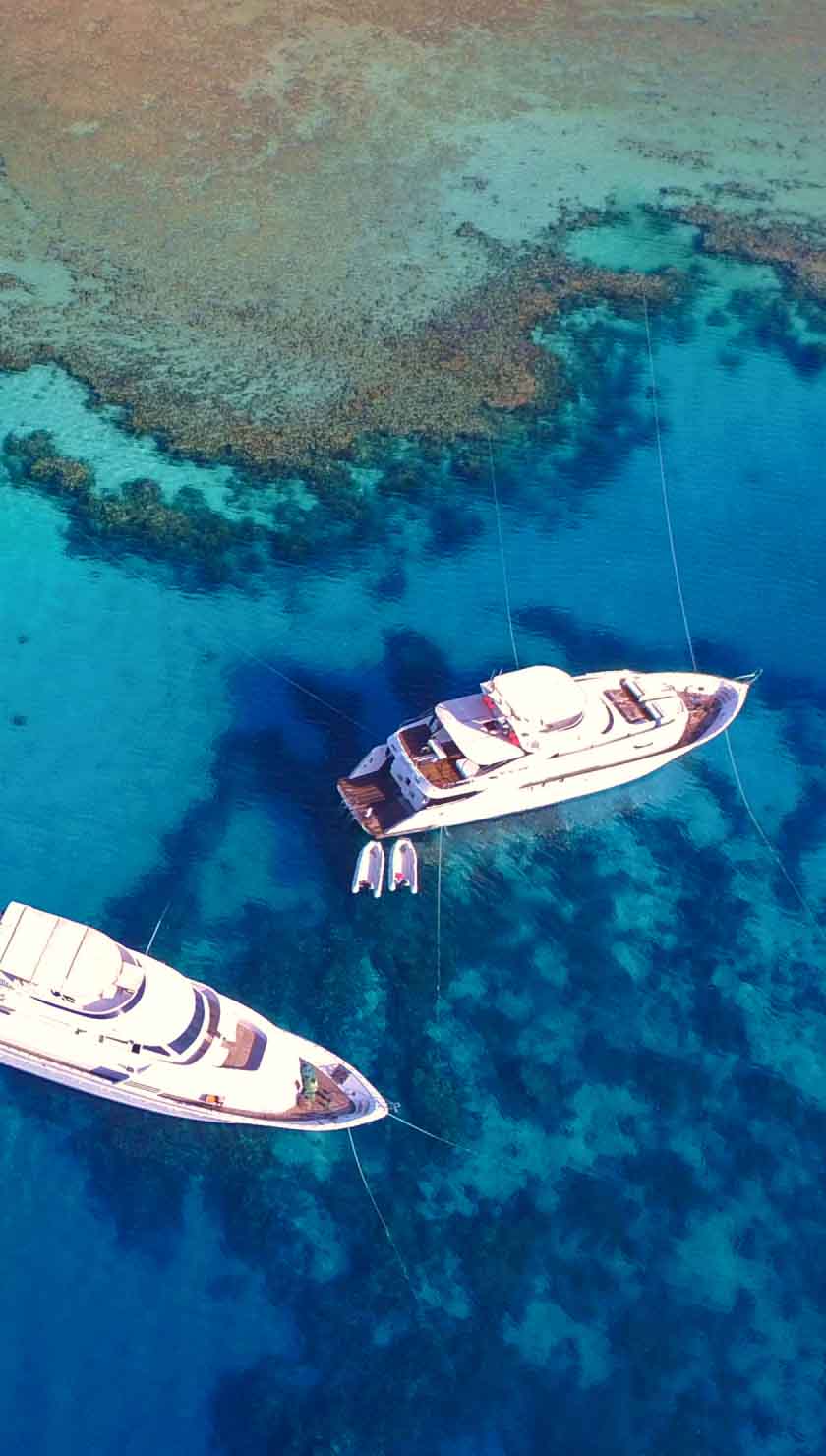Liveaboard Diving in Cocos
What To Expect On a Cocos Island Liveaboard
Cocos Island liveaboards will take you some 550 kilometers from the Costa Rican Pacific coast, where divers will find nutrient-rich waters filled with diverse marine life of all shapes and sizes, guaranteed to wow even the most experienced underwater addicts. Cocos Island of Costa Rica represents some of the best diving opportunities in Central America, and considering this region includes the likes of Belize, Mexico, and Honduras, that is certainly saying something. The combination of remoteness and protection afforded to it by the Costa Rican Government (it's been a marine reserve for nearly 20 years) means that the sites at Cocos Island are largely undisturbed, allowing the ecosystem to thrive. All the usual tropical species are to be found here, along with large pelagics - but the main draw for many visitors is the sheer number of sharks, particularly Hammerheads, that can be seen year-round. The only feasible way to get here is on a liveaboard dive trip, which lasts for at least 10 days, giving ample time to explore the stunning underwater landscape in this unspoiled spot of the Pacific.
Cocos Island Underwater
Having traveled for nearly 2 days aboard, you'll be itching to get in the water to see what all the fuss is about! Thankfully, there's no shortage of life in each site at Cocos Island. The area is deservedly on many diver's bucket dive trip lists due to the large groups of Hammerhead Sharks that are consistently seen in many sites - numbers can regularly top 100! Plenty of other shark species are to be found here, including Silkys, Blacktips, Whitetips, and the infamous Tiger Shark.
Manta and Eagle Rays are always seen gliding effortlessly through the blue, as majestic as they are beautiful, offering some wonderful photo opportunities. Schools of fish, such as Jacks, can be viewed in vast numbers, and because the visibility commonly reaches 30 meters, you can be sure that none of this action will go unnoticed.
Dive Sites of Cocos Island
With over 20 dive sites to explore, it's easy to see why a liveaboard is the best way to dive into Cocos Island. With each dive safari lasting at least 10 days, the crew will ensure you can undertake a few dives daily to include each spot in your itinerary.
Bajo Alcyone is widely recognized as one of the best places on the planet to dive with Hammerhead Sharks. Their unique body shape is this animal's distinguishing feature, and seeing them as part of groups over 100 is a truly staggering sight. Viewing these graceful creatures circling above you makes for one of the most iconic photographs of any Costa Rican dive trip. Other sites with many resident Hammerheads include Dirty Rock and Manuelita Deep.
Manuelita Garden is often the first site that liveaboards stop at, giving easy and gentle conditions to allow divers to get used to their equipment and tune up their skills. The coral garden here is one of the finest in Costa Rica. The giant swim through and huge natural arch at Dos Amigos Grande also provide an interesting and fun element to the diving here.
Top Tips For Divers
Diving at Cocos Island used to be limited to experienced and daring divers due to the depth and strong currents at some of the sites; however, liveaboard dive cruises lasting for many days have allowed exploration of a range of sites that suit many experience levels. Operators often require a minimum of 30 logged dives and an Advanced Open Water qualification. As such, it's important to bring your logbook and certification.
Divers are welcome to bring their equipment, but generally, it's available to rent onboard, although this should be checked first.
ATMs are found fairly easily on the mainland, where most major credit cards are widely accepted. The currency is the Costa Rican Colon. You'll get on fine speaking English as it's commonly spoken, especially within the tourism sector, although Spanish is the national language.
Getting to Cocos Island
As mentioned, Cocos Island is over 500 kilometers from the mainland. You'll need to get on board a liveaboard boat to get there, and the common departure point is the port of Puntarenas, around a 90-minute drive from the capital San Jose. Commonly liveaboard operators will include a hotel night in San Jose and then transfer to the vessel as part of the tour. Others can arrange this for you as an extra. Either way, please check with your operator.
San Jose International Airport has regular flights to and from North America; if you come from outside the Americas, you'll likely transfer through the U.S.











